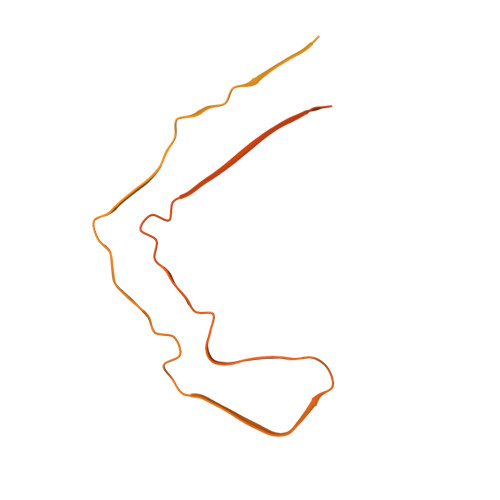Tau filaments from amyotrophic lateral sclerosis/parkinsonism-dementia complex adopt the CTE fold.
Qi, C., Verheijen, B.M., Kokubo, Y., Shi, Y., Tetter, S., Murzin, A.G., Nakahara, A., Morimoto, S., Vermulst, M., Sasaki, R., Aronica, E., Hirokawa, Y., Oyanagi, K., Kakita, A., Ryskeldi-Falcon, B., Yoshida, M., Hasegawa, M., Scheres, S.H.W., Goedert, M.(2023) Proc Natl Acad Sci U S A 120: e2306767120-e2306767120
- PubMed: 38100415
- DOI: https://doi.org/10.1073/pnas.2306767120
- Primary Citation of Related Structures:
8OT6, 8OT9, 8OTC, 8OTD, 8OTE, 8OTF, 8OTG, 8OTH, 8OTI, 8OTJ - PubMed Abstract:
The amyotrophic lateral sclerosis/parkinsonism-dementia complex (ALS/PDC) of the island of Guam and the Kii peninsula of Japan is a fatal neurodegenerative disease of unknown cause that is characterized by the presence of abundant filamentous tau inclusions in brains and spinal cords. Here, we used electron cryo-microscopy to determine the structures of tau filaments from the cerebral cortex of three cases of ALS/PDC from Guam and eight cases from Kii, as well as from the spinal cord of two of the Guam cases. Tau filaments had the chronic traumatic encephalopathy (CTE) fold, with variable amounts of Type I and Type II filaments. Paired helical tau filaments were also found in three Kii cases and tau filaments with the corticobasal degeneration fold in one Kii case. We identified a new Type III CTE tau filament, where protofilaments pack against each other in an antiparallel fashion. ALS/PDC is the third known tauopathy with CTE-type filaments and abundant tau inclusions in cortical layers II/III, the others being CTE and subacute sclerosing panencephalitis. Because these tauopathies are believed to have environmental causes, our findings support the hypothesis that ALS/PDC is caused by exogenous factors.
Organizational Affiliation:
Medical Research Council, Laboratory of Molecular Biology, Cambridge CB2 0QH, United Kingdom.














